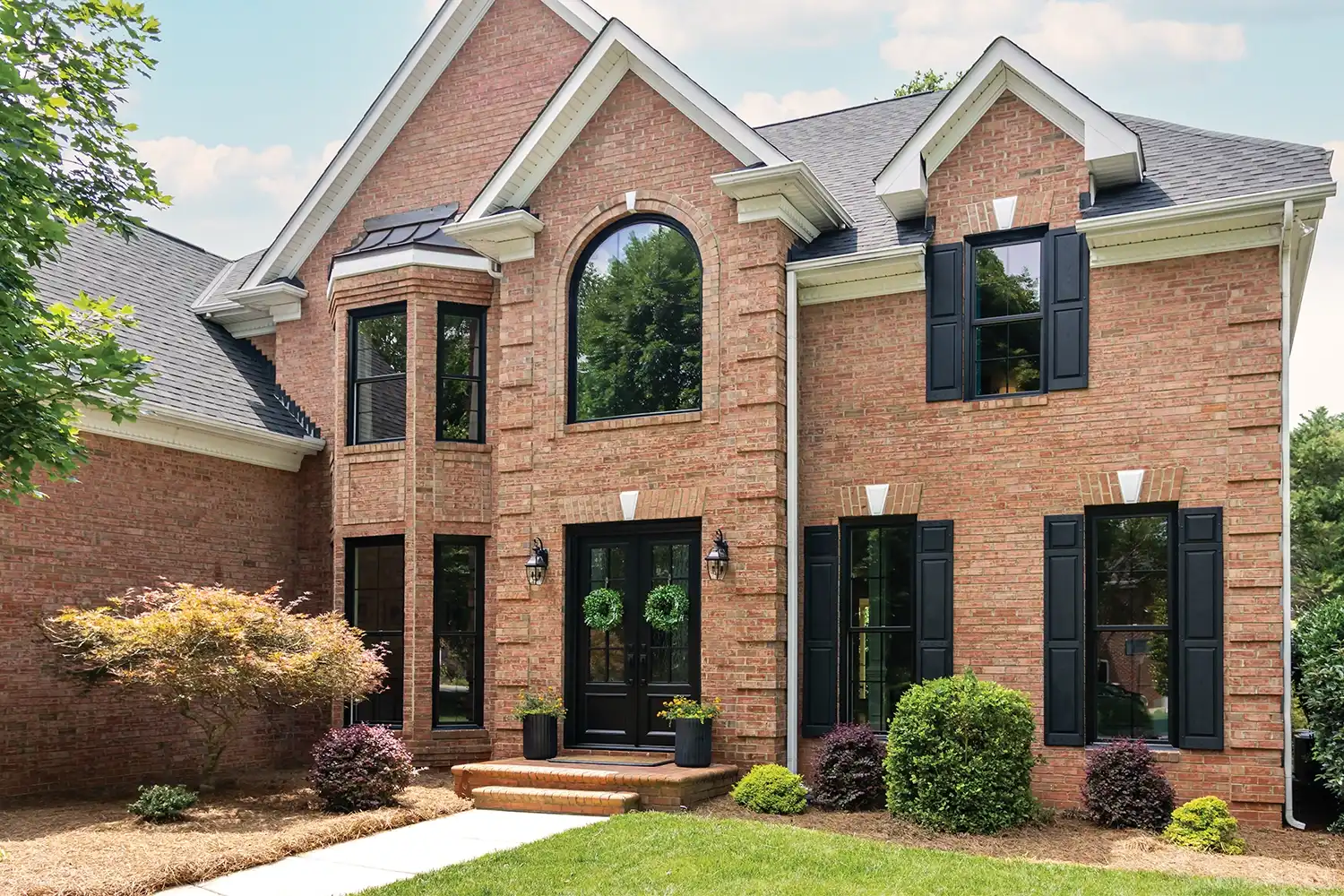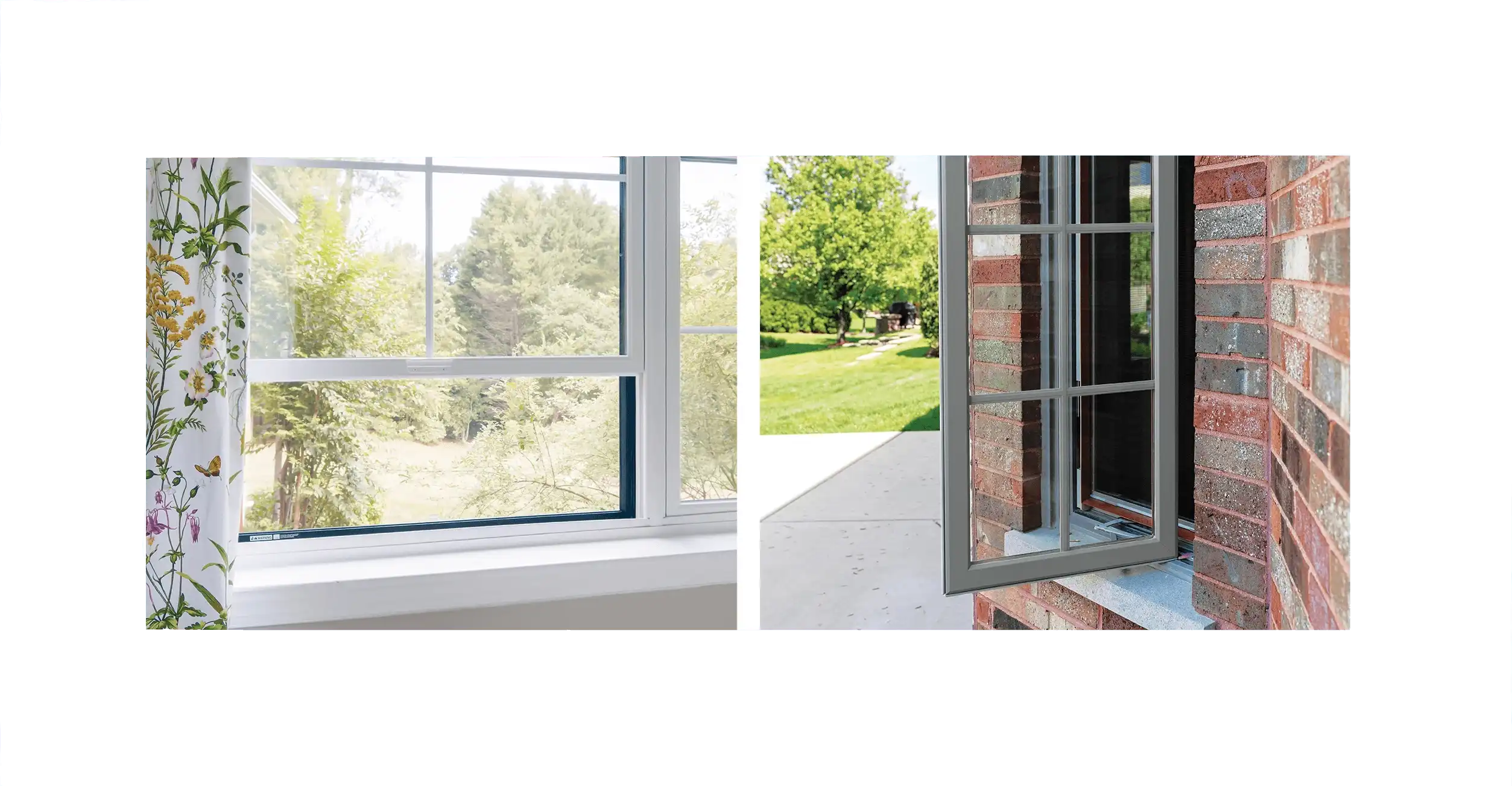
5 June 2024
Bay vs Bow Windows
Not sure what the difference is between a bay window and a bow window? Both provide big views for your home but they do so differently. Find out the difference between a bay window vs a bow window, the pros and cons of each, and where they fit well in a home.
What’s the Difference Between a Bay Window and a Bow Window?
Shape: The biggest difference between a bay window and a bow window is the shape. Bay windows have flanking windows set at an angle for a geometric look. Bow windows have an arc that curves for a smoother look.
Design: Bay windows only have three windows, so they have a smaller footprint in your home than bow windows. Both window designs can have each window open and close. You can also choose to have the middle windows remain fixed or inoperable.
Size and space: Bay windows take up less space than bow windows because they have fewer windows.
Why you’d choose one over the other: Several home styles, like Victorian, Tudor, Mid-Century Modern, and Craftsman styles that pop up throughout Portland can have bay or bow windows. Choosing a bay window vs a bow window can come down to how much room you have available, your existing window, your home’s architectural style, and personal preference. Bow windows can work well in corners of a home to create a turret look.
Cost comparison: Bow windows typically have a higher cost than bay windows because they have more windows. Bow window installation can involve more work than bay windows, too.
Marvin Replacement Bay Windows
Window Size
Bay window sizes can range from nearly 4-feet wide and nearly 3-feet high, up to 11 3/4-feet wide and 6-feet high with custom sizing available
Number of Windows
3
Ventilation
Double hung or casement
Common Home Style
Victorian, Craftsman, Mid-Century Modern
Marvin Replacement Bow Windows
Window Size
Bow window sizes can range from nearly 6-feet wide and nearly 2-feet high to 12-feet wide and 6-feet high with custom sizing available
Number of Windows
4, 5, or 6
Ventilation
Casement
Common Home Style
Victorian, contemporary, Mid-Century Modern

What is a Bay Window?
A bay window is a group of three windows mulled together to form one unit. Bay windows that open can feature three double hung windows or three casement windows. Bay windows can also have a picture window as the center window with flanking windows on each end. Marvin Replacement Bay Windows can have flanking windows at 30° or 45°. Bay windows also have seat boards where you can relax and enjoy the warmth of sunlight.
What is a Bow Window?
A bow window is a collection of windows set in an arc that projects outward from your house. Marvin Replacement offers bow windows that open with assemblies of four, five, or six casement windows to provide ventilation.
Bay Window Pros and Cons
Bay windows have their advantages and disadvantages like other windows. When comparing bay and bow windows, you can find a little more flexibility with bay windows in terms of design and placement.
Pros:
Versatility: Small bay windows fit perfectly above a kitchen sink while large bay windows can create a cozy breakfast nook in your kitchen area. Homes often have large living room bay windows for curb appeal, natural light, and panoramic views. A bedroom bay window can capture scenic views.
Appearance: Bay windows have traditional appeal to give homes a stately look. Bay windows paired with window grilles add architectural appeal and make them a focal point of your home. You can see bay windows dot the landscape of homes in Raleigh, North Carolina and Charlotte where traditional home styles appear.
Light: When you combine multiple windows together, you get the benefit of increased natural light. Since bay windows have angled windows, you can capture natural light from different spots, too.
Ventilation: Whether you choose three operating windows or just two, a bay window provides ample fresh air. Two operating flanking windows can capture breezes to bring them into your home. Marvin Replacement Bay Windows can come as double hung windows where the top sash can open to allow hot air to escape. You can also choose casement windows that open wide to allow air to permeate your home.
Cons:
Room: Though bay windows can come in a variety of window sizes, they do require enough space for installation.
What Can You Do with a Bay Window?
Bay windows have a little more design possibilities than bow windows because they come in smaller sizes. A small bay window above a kitchen sink creates a bigger viewing space as you do chores. Bay windows in other spots create nooks and alcoves. Larger bay windows offer cozy spots with window seats where you can sit to relax with a book while bathing in sunlight. Some homeowners have used the extra space for hobbies and crafts. You can use the space to store craft items or add plants. House plants can help with home air circulation.
Bow Window Pros and Cons
Bow windows come in larger sizes than bay windows, which can allow additional natural light and fresh air into your home.
Pros:
Panoramic views: With four, five, or six casement windows assembled together, you get fantastic views with style. A bow window can give as wide of a view as a patio door without having to open an entire patio door. Bow windows fit in places where a patio door doesn’t make sense.
Ventilation: Bow windows typically feature casement windows, which means you can control the amount of air you want to enter your home by deciding how far to open the window. Bow windows can all have operating windows or just some operating windows.
Appearance: Bow windows fit into several home styles. They often appear in homes on the East Coast, like Philadelphia or areas of New York, like Long Island.
Cons:
Size: Starting with four windows mulled together means bow windows require a lot of space. Bow window sizes can range from six-feet wide to eight-feet wide.
Appearance: How a bow window will appear needs consideration since it will become a focal point of your home.
What Can You Do with a Bow Window?
Bow windows add space to a home because the extend out. The possibilities for the extra space can seem endless. Depending on the size of the bow window, you can use the area for seating. Bow windows also create a nice ledge for storage or a place for plants to soak up sunlight. A bow window in a home office can offer the perfect place to gaze outside during the workday while you absorb rays of energizing sunshine.
Where Should You Use a Bay or Bow Window?
Bay windows are a great choice in kitchens, living rooms, and bedrooms. Bow windows can fit well in living rooms and bedrooms but require more space than bay windows. A second-story bay or bow window can provide wide landscape views from a unique angle. Kitchen bay windows can create a breakfast nook while large bay windows in living rooms can set up a reading nook or display shelf.
Bay + Bow Window Replacement and How to Get Bay + Bow Windows
If you’re replacing a bay window, a Marvin Replacement design consultant can discuss custom bay windows to fit your home. Since bow window replacement can be a bigger project, our design consultants can help you design the perfect custom bow window.
FAQs
Can a bay window replace a bow window?
Yes, you can replace a bow window with a bay window. You must think about the space where you’re putting a bay window because they have fewer windows. Though bay windows have fewer windows, you can use larger windows to fill the area where you had a bow window better. Careful window measurement needs to happen to ensure a proper fit. You also must think about the style of windows. Marvin Replacement Bay Windows can have double hung windows or casement windows. Our bow windows only feature casement windows.
Does a bay or bow window add value to your home?
Bay and bow windows can add value to your home in several ways. You can value the sweeping views they provide. There is also value with bay and bow windows in the curb appeal they offer. Bay and bow windows often get considered as luxury items and there’s perceived value in them.
How far can a bay window stick out?
How far a bay window sticks out depends on the angle of the flanking windows. Bay windows with flanking windows set at a 30° angle can extend out about 13-14 inches. Bay windows with a 45° angle can stick out around 19 inches.
Back to All Articles
You May Also Like

Types of Replacement Windows
If you haven't replaced windows before, there's a lot to learn. The first place to start is by learning the different types of replacement windows so you know what fits best for your home.
Types of Replacement Windows
What is a Casement Window? Styles + Types to Know
Casement windows have unique function and style that can suit a home perfectly. They provide ample ventilation and bring uninterrupted views to a room. Learn the advantages of casement windows.
What is a Casement Window?
Casement vs. Double Hung Windows
Casement and double hung windows are popular options for homes. Find out the pros and cons of each window type to find the right fit for your home.
Casement vs. Double Hung Windows